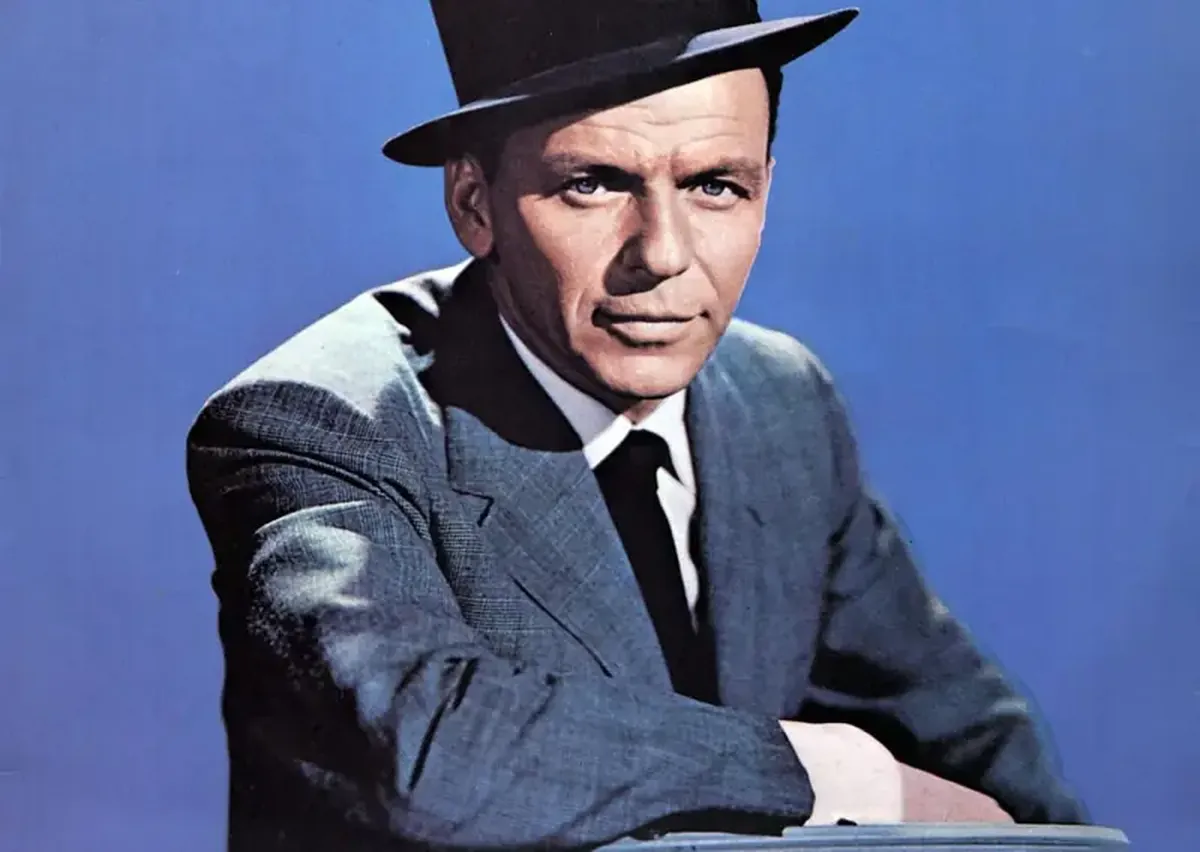
Frank Sinatra, the beloved singer of several generations of Americans, navigated his path in such a way that its conclusion was deemed a metaphorical “end of the 20th century.” Fascinating facts about Sinatra revolve around his fame, wealth, women, and power. What is known about his friendships with politicians and his connections to the mafia? Why would a successful, famous, and wealthy man, who was already a millionaire at the age of 31, want to cut his life short in the prime of his life? What forced him to rebuild his career, and where did he find the resources for his professional and personal revival?
“Mr. Blue Eyes”
From a young age, the boy with the “velvet” baritone was nicknamed “The Voice,” and as he gained fame as a showman, conductor, actor, director, producer, and political activist, he became known as “The Elder Statesman.” The secret to his magical influence over concert audiences, moviegoers, and those around him lies in the personal charisma of “Mr. Blue Eyes.” It’s hard to explain why the most popular American and European composers entrusted their musical gems to a performer who stepped onto the stage without knowing how to read music. The artist performed nearly 2,000 songs in 40 countries and sold over 150 million records. Frank Sinatra’s songs have become classics of popular music, and his vocal, acting, and public achievements over a 60-year career are measured by eleven Grammy Awards, an Academy Award, four Golden Globe Awards, and the highest civilian honor in the U.S. – the Congressional Gold Medal.
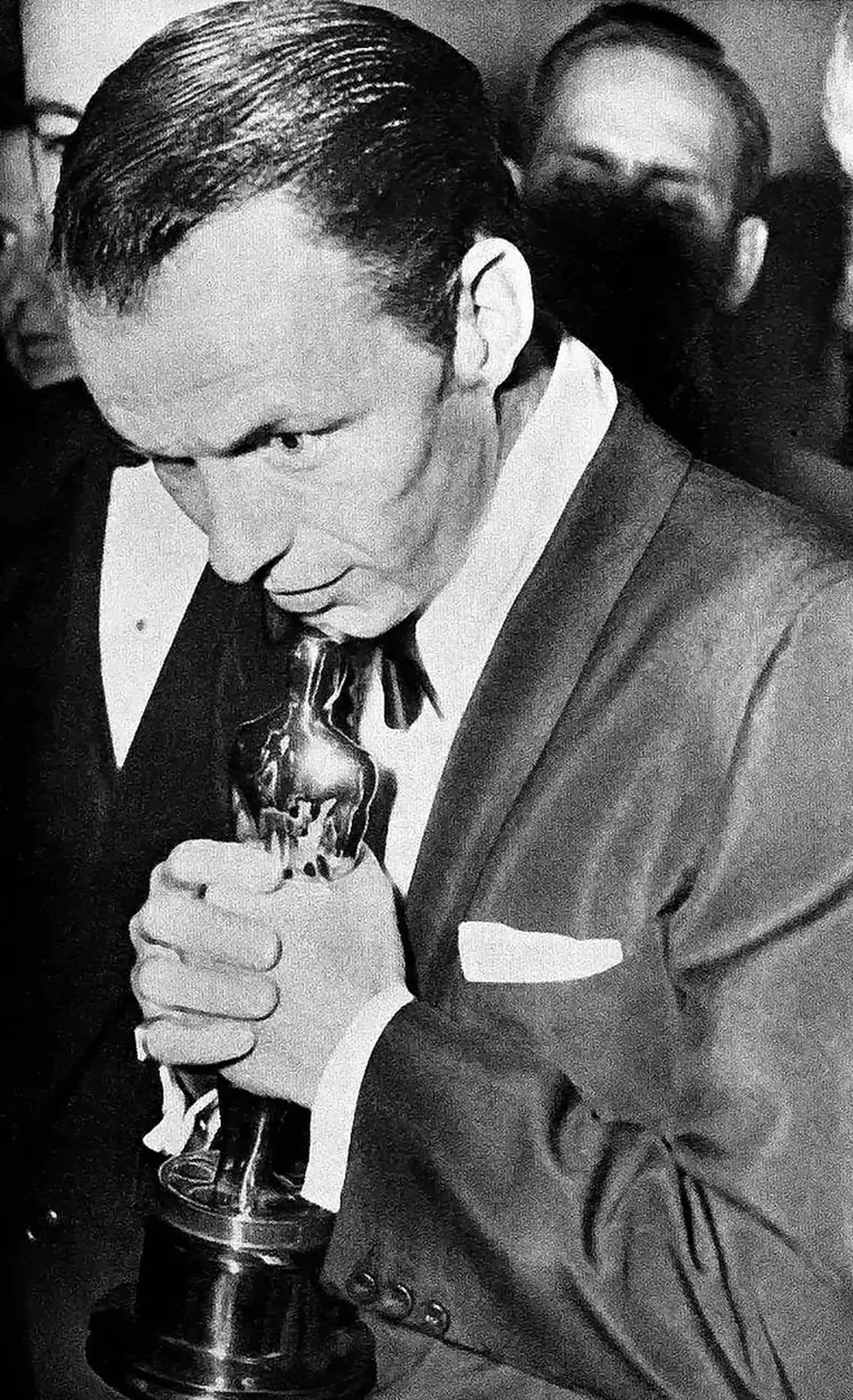
Frank Sinatra with his Oscar for the film From Here to Eternity, March 1954
Christmas in a Warm Tone
The American singer of Italian descent enchanted the world with exemplary samples of the “crooning” technique (from the English word croon – to hum). He made the intimate style of singing softly characteristic of microphone-driven popular music. The crooner’s performance mastery lay in his virtuosic rhythmic declamation – a technique of intonational phrasing with perfect articulation of every sound. The clear pronunciation of words in his jazz compositions makes his famous recordings an ideal resource for learning English. His Christmas recordings remain relevant educational material for both children and adults. For over half a century, the holiday season has been accompanied by the cozy melodies of Jingle Bells, Let It Snow, Santa Claus is Comin’ to Town, Mistletoe and Holly, I’ve Got My Love to Keep Me Warm, and other recognizable songs by Frank Sinatra.
The Son of a Midwife and a Boxer
The future icon of musical style and refined taste was born on December 12, 1915, in Hoboken, New Jersey, part of the New York metropolitan area. Francis Albert, or Frankie as he was called at home, came from a family of Italian immigrants, Antonio Martino Sinatra and Natalina Garaventa. His father immigrated to the U.S. from Sicily, while his mother came from Genoa. The man worked as a boilerman and dockworker in America, while the woman was a midwife and nurse. After the birth of their son, the father began earning money in the boxing ring (he fought in the lightweight category but was skilled in the ring and popular with spectators), while the mother, according to rumors, improved the family’s financial situation by performing illegal abortions, ensuring that during the Great Depression, her son had better clothing (he always wore a white shirt, suit, and nice shoes) and could enjoy outings with friends.
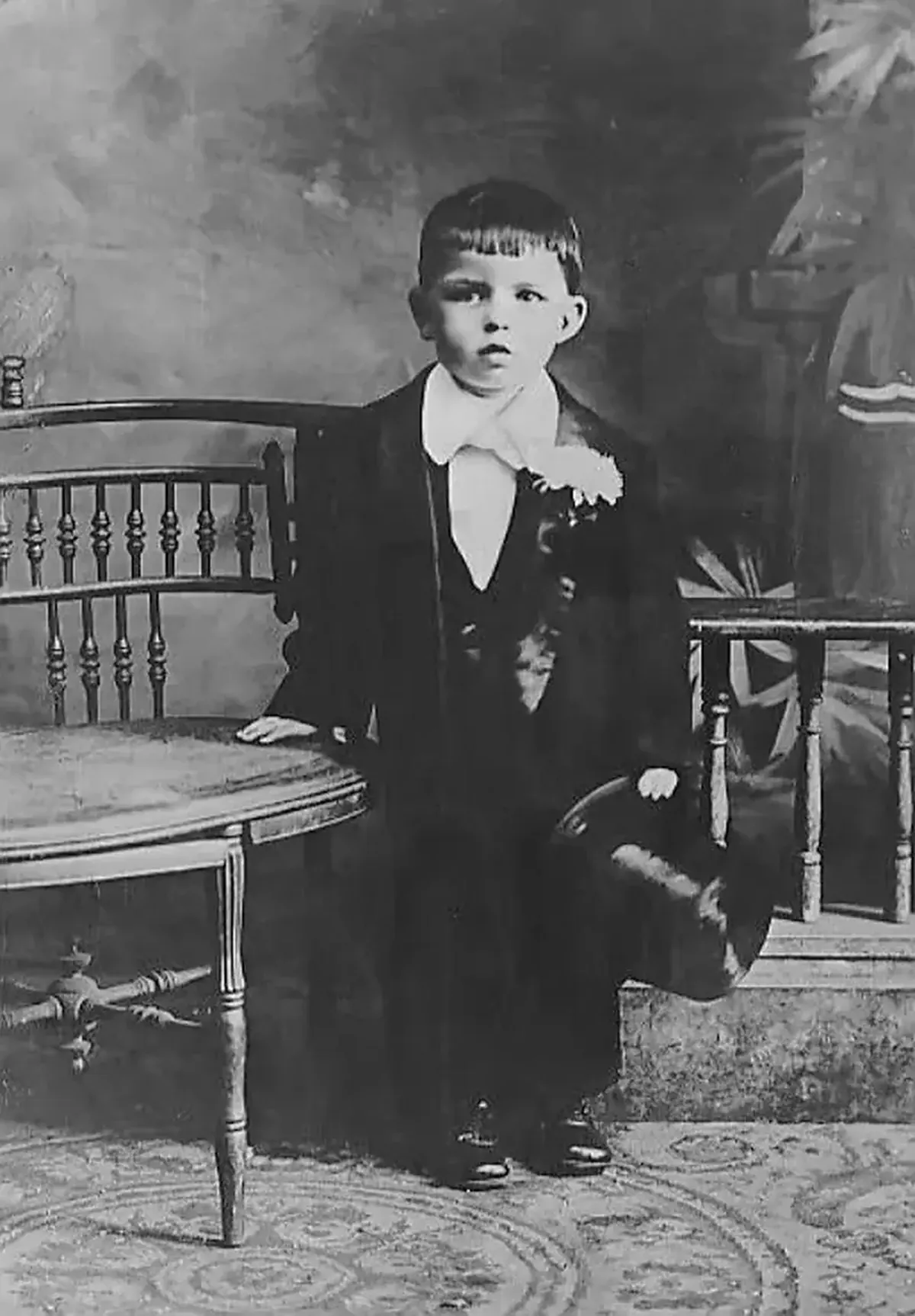
Frank at the age of 2-3 years
Birth Trauma
Midwife Dolly (named after the doll, as Natalina was nicknamed for her “doll-like” appearance) could hardly control her own labor. The suffering boy was born with great difficulty, leaving Frankie, who entered this world in pain, as the only child in the family. Due to birth trauma associated with the abnormal positioning of an overly large fetus in the womb of a fragile mother, the newborn, weighing around six kilograms, had to be manually turned and extracted with forceps. This difficult birth left the future star with physical defects: asymmetry and facial deformities, scars on his head and neck, damage to his left ear and eardrum, which later rendered him unfit for military service during World War II. A journalist who would later question his unfitness and accuse him of dodging the draft or using connections would find himself on the receiving end of Frank’s inherited boxing skills.
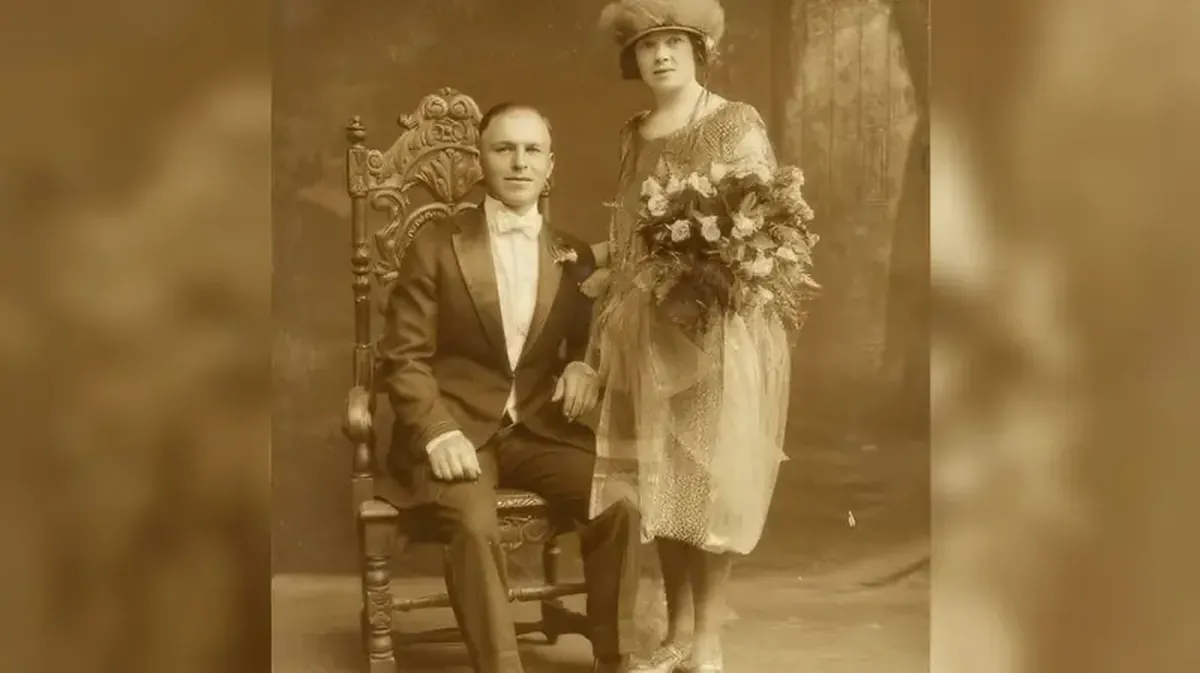
Frank Sinatra’s parents
Womanizer and Troublemaker
Another interesting fact about Frank Sinatra’s life is his “hereditary” political engagement. His affinity for the Democratic Party was nurtured from childhood, as his mother managed the local party branch in Hoboken, where a statue of him now stands. A suffragette who defended the rights of abused women, she spoke several languages and helped immigrants with translations. Endless work prevented Mrs. Dolly from focusing on caring for her son, so he was raised by his grandmother and aunt. Frank was brought up in the Roman Catholic tradition. He would later reveal his faith to the world when he turned to the church in prayer for his mother, who died in a plane crash in 1977. Francis Albert received neither musical nor secondary education: a careless student, he attended fewer than 50 classes before being expelled for misconduct. In 1938, Sinatra was arrested for a crime that was then considered adultery and seduction.
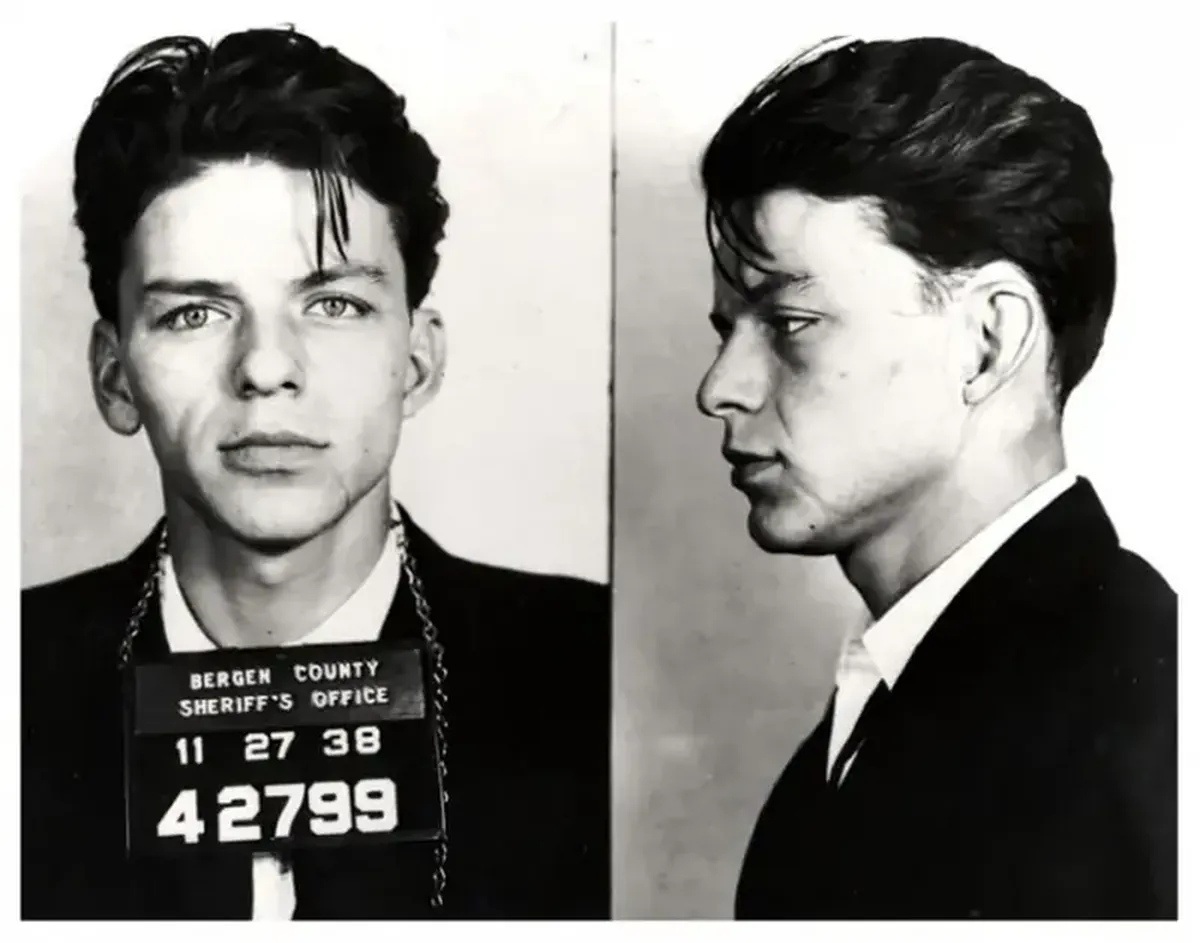
Manly Affairs
Despite his risky behavior, Sinatra was able to stand up for himself from a young age and had good manners. He was always characterized by confidence, independence, sociability, and friendliness, which attracted people of various statuses. Frank learned the art of communication in his father’s bar – from his teenage years, the boy with the injured ear but perfect musical pitch entertained patrons with song at the drinking establishment where his father worked after he was injured in the ring and had to leave boxing due to broken wrists. Later, Sinatra Sr. joined the fire department, where he rose to the rank of captain, while his gifted son, who sang in the church choir, learned to pick melodies by ear on the ukulele, and over the years of performing, learned to read music and mastered the piano. In 1935, he won a talent contest and embarked on his first tour after appearing on a popular radio show.
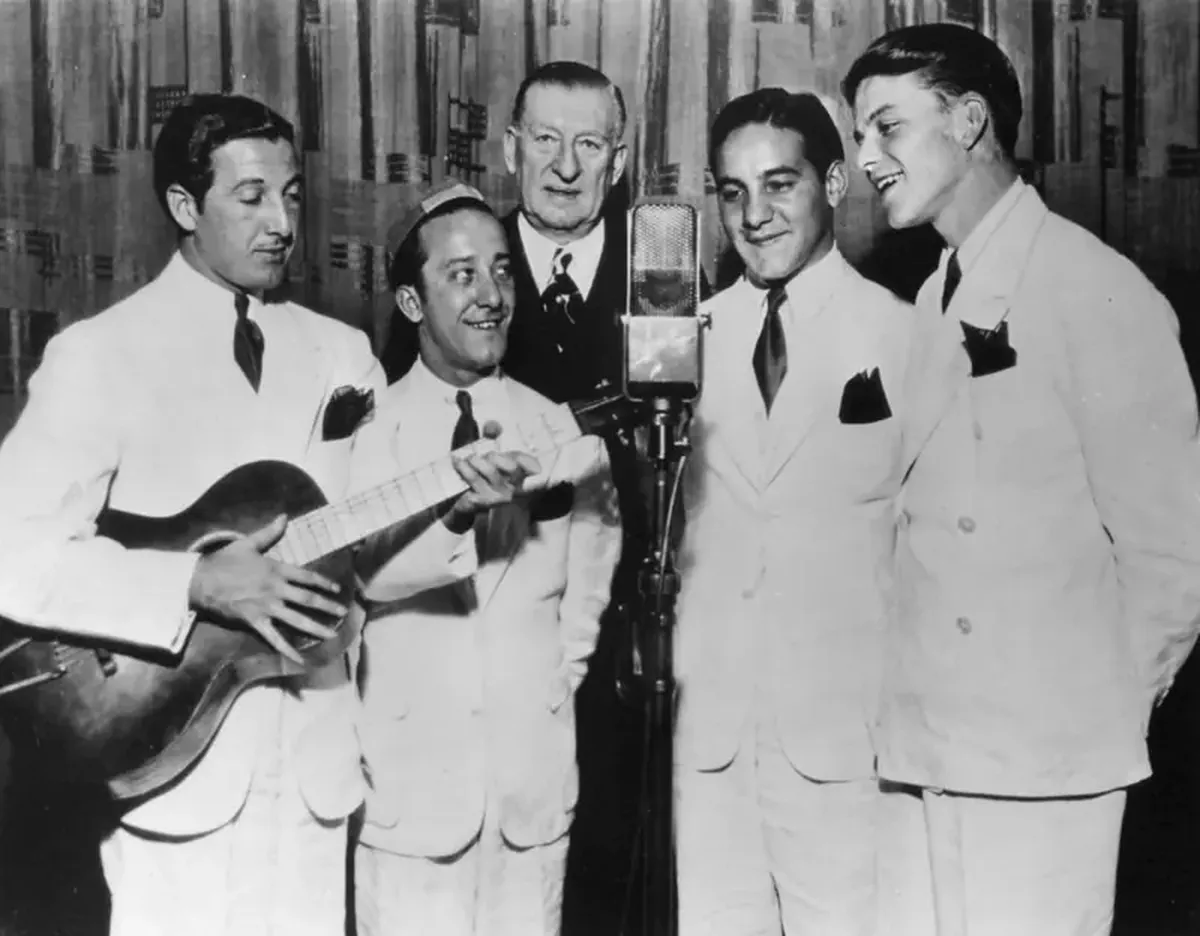
Lifetime Contract
Subsequently, the natural showman laid the foundations of his performing career with performances on the radio and in a music restaurant in New Jersey, where producers took notice of him. The turning point in Sinatra’s professional rise came from his work in the swing jazz orchestras of trombonist Tommy Dorsey and trumpeter Harry James from 1939 to 1942. However, an inexperienced musician made the mistake of signing a predatory contract that required him to give nearly half of his earnings to Dorsey. When he managed to break the unfavorable deal, rumors circulated about the mafia’s assistance to Frank. A similar episode even appears in the plot of the novel “The Godfather,” where the character of singer Johnny Fontaine was easily recognizable as Frank Sinatra. However, Dorsey and others involved in that misunderstanding denied any interpretations favoring the version of Sinatra’s agency buying out the infamous contract.
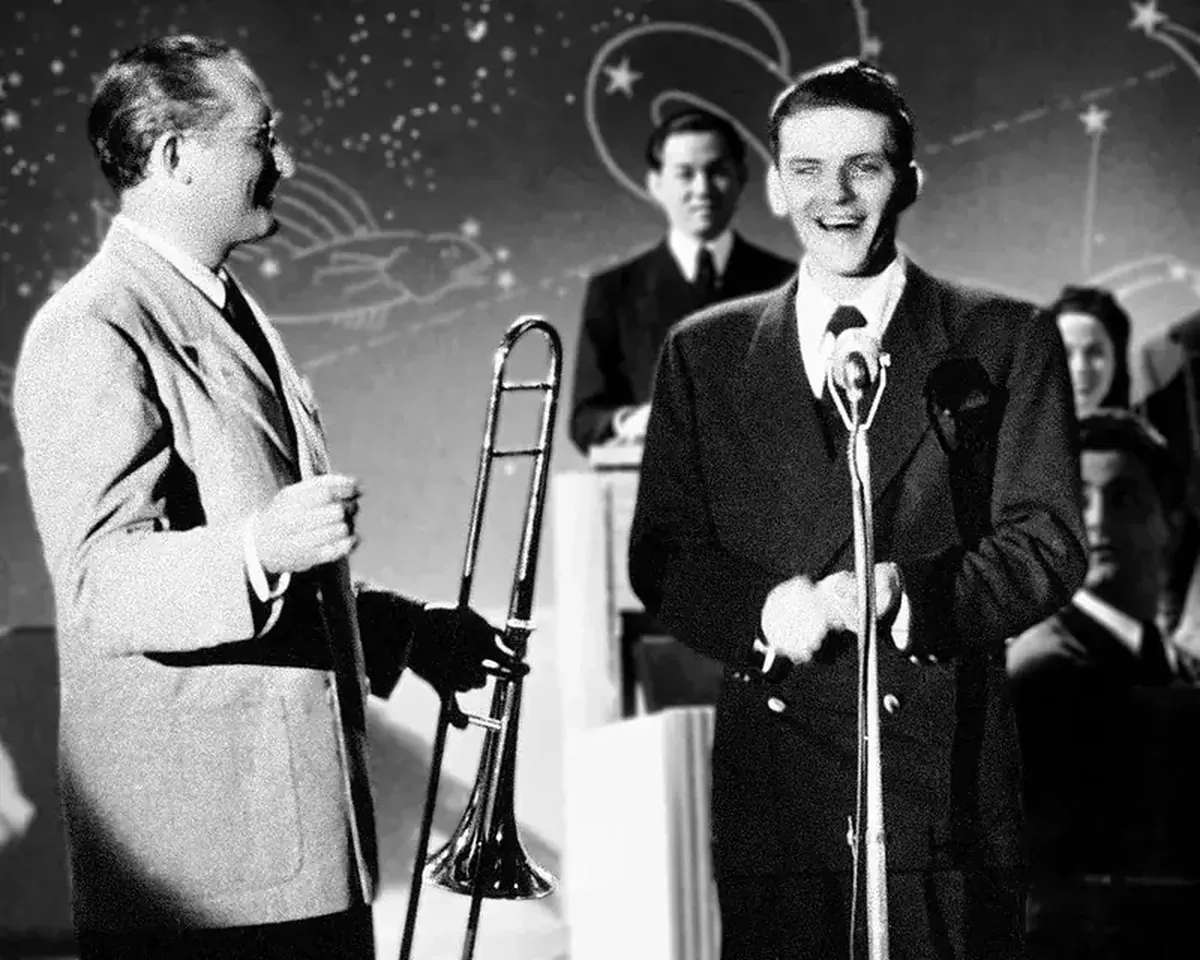
How to Become a Star
Instead of a lifetime contract, Frank Sinatra received a lifelong accompanist from Dorsey, with whom he collaborated for over forty years. Bill Miller, a contemporary of Sinatra, was a pianist and arranger in the orchestra. They began performing together after a subsequent meeting, recommended by a certain composer in Las Vegas, and that creative duo lasted until the end of Sinatra’s career. The last time they shared a stage was at the singer’s funeral, where the pianist played an important role in his career. Another fortunate acquaintance in Frank’s life was agent George Evans, who saw Sinatra at a Christmas concert in the Paramount Theater in New York in 1942. This man turned the novice artist into a true star in just two weeks. An active advertising campaign, radio broadcasts, and successful performances made Evans’s protégé a favorite among American girls, who fanatically bought tickets to concerts and magazines featuring their idol.
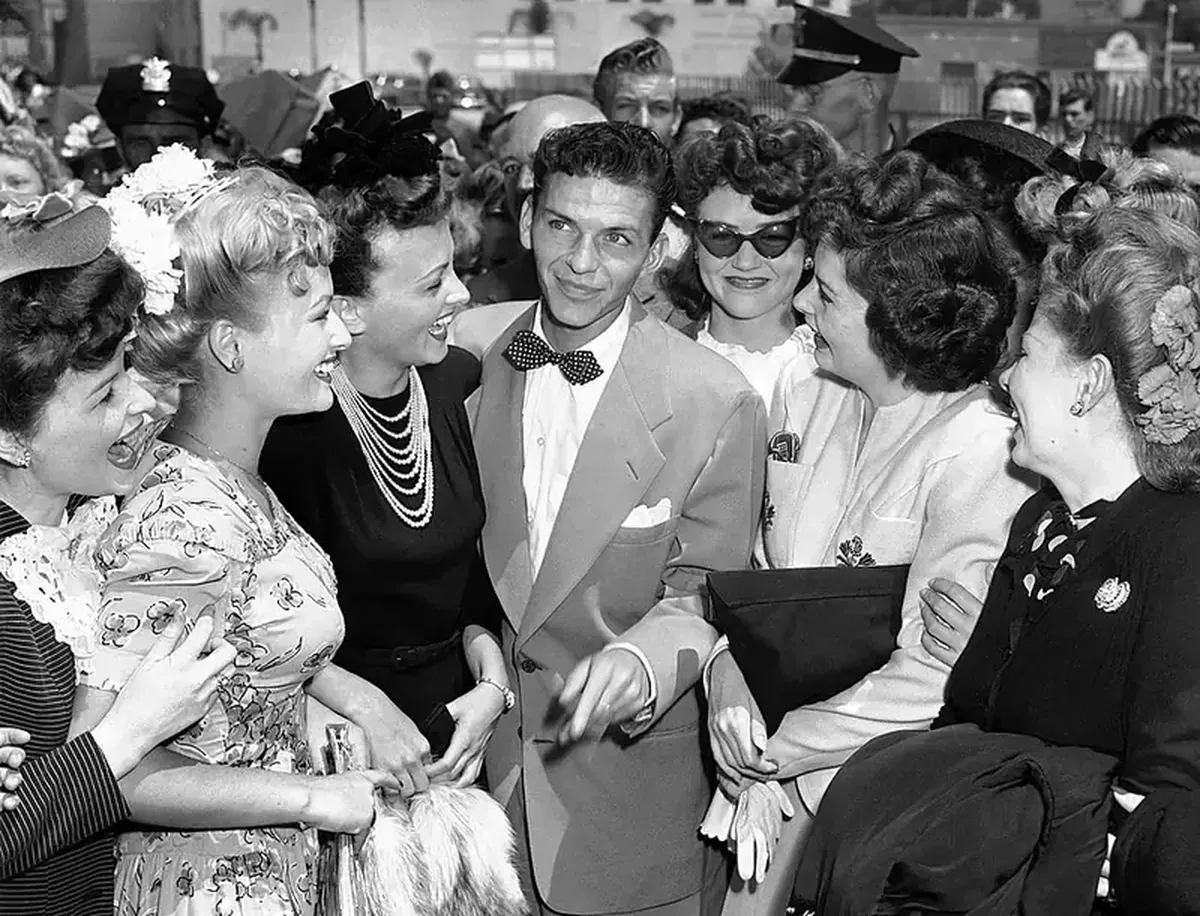
The Life of a Millionaire
The successful recording of his first solo album, The Voice of Frank Sinatra, at Columbia Records in 1946 increased the wealth of the young millionaire. That same year, ten million copies of the musical novelty (a conceptual sound release of eight songs recorded on four 10-inch records) and other recordings by the popular singer were sold. Frank Sinatra became a pioneer in the new recording standard mastered by the studio in 1948: his voice was featured on the first long-playing record (LP) spinning at 33⅓ revolutions per minute. Sinatra bought land in the prestigious resort of Palm Springs and built a respectable house shaped like a grand piano on the property, complete with a swimming pool. A genuine Steinway concert grand piano became the centerpiece of his music room. The singer’s luxurious home near Los Angeles became a magnet for his numerous guests and attracted the attention of enemies, ultimately forcing the artist to isolate himself from the outside world with an impenetrable stone fence.
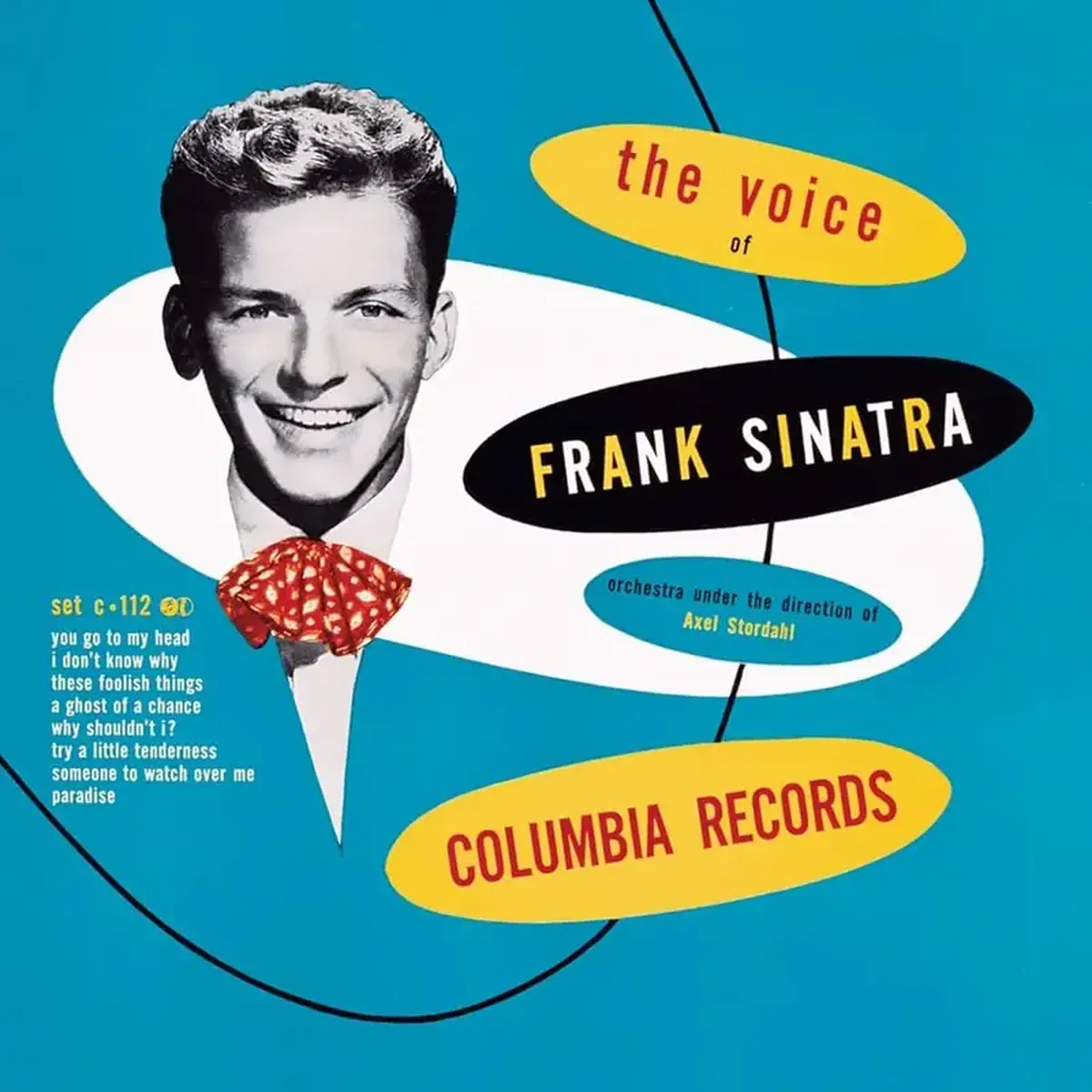
A Man from the Past
A tumultuous romance with actress Ava Gardner coincided with the beginning of a creative crisis in the late 1940s. Sinatra began to abuse alcohol and, over three years (from 1949 to 1952), completely destroyed his brilliant career. Due to a cold, he lost his voice in 1951. The new studio management chose not to renew his contract. He was fired from the radio. Planned concerts in New York were canceled. A scandalous affair gained notoriety. Frank Sinatra’s wife, Nancy Barbato, filed for divorce. The unfortunate man struggled to fend off media harassment. It was also a time of political upheaval in the country and rampant censorship during the McCarthy era, when many people fell from grace due to suspicions of communist sympathies. Frank Sinatra was added to the ranks of the “unreliable” due to his active support for Jews and African Americans. The once sought-after artist suddenly became a “man from the past” at the age of 34. He was so deeply affected by these troubles that he nearly took his own life.
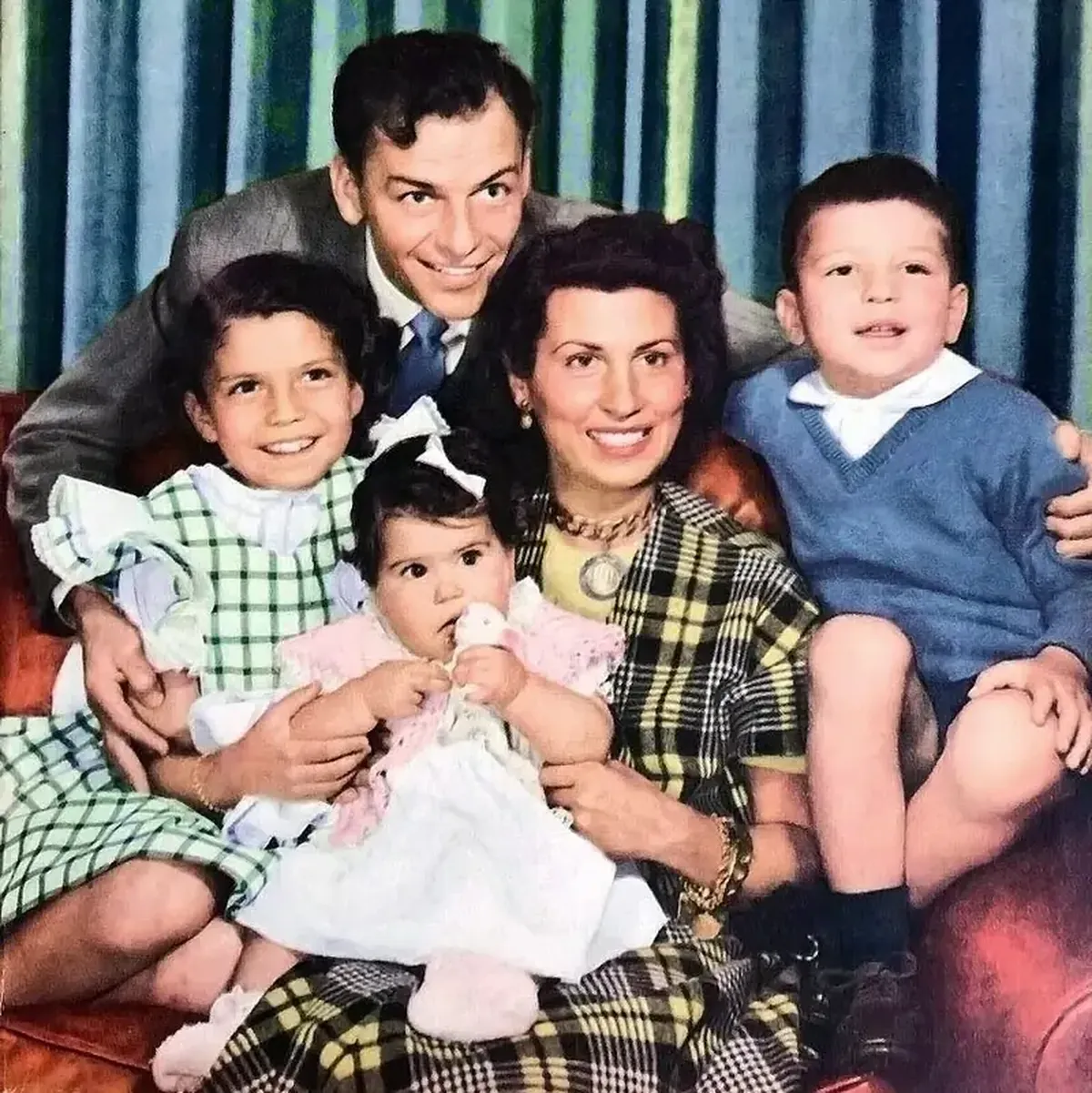
Frank Sinatra, his first wife Nancy Barbato, and their children Nancy, Tina, and Frank Jr., 1949
Sinatra and Gardner
Only his tumultuous relationship with the vibrant woman kept Frank from falling into despair, but it was equally complicated. After marrying in 1951, Sinatra and Gardner divorced six years later. Throughout his life, he had four wives, and Ava Gardner, after suffering two strokes, later paid all medical expenses and accumulated debts. The glamorous beauty, who remained a fixture in the social chronicle until the end, had two marriages by the age of 25, and after her split from Frank Sinatra, she became friends with Ernest Hemingway. It was Ava Gardner’s persistence that helped Frank Sinatra land his Oscar-winning role in 1953, which marked the beginning of his creative revival: the Hollywood actress persuaded studio heads to cast Sinatra, and he did not miss his chance. It was his acting career that kept him afloat during the crisis in his singing career.
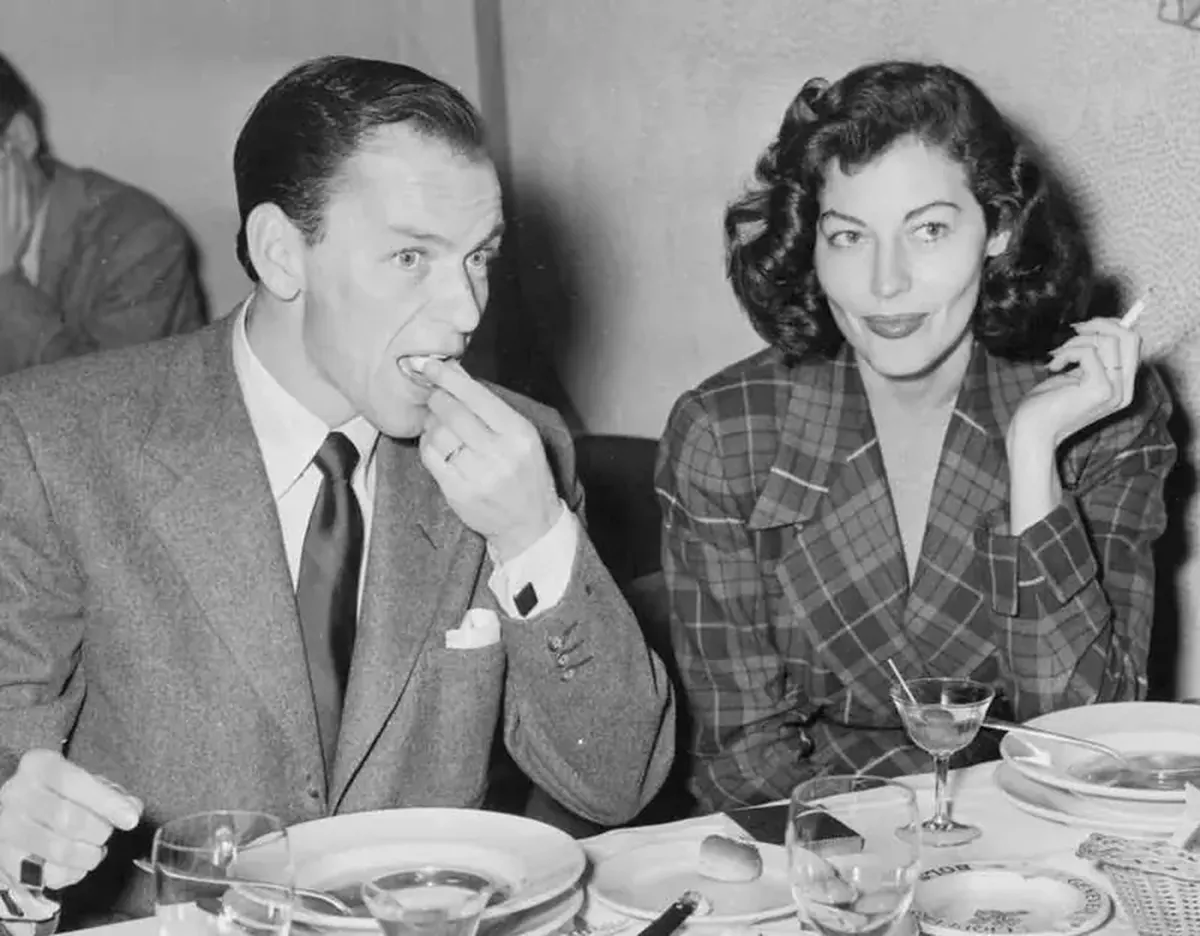
Frank Sinatra and Ava Gardner, 1951
Films with Frank Sinatra
Sinatra’s first cinematic success and worthy fee came from his work in “the past life” – the musical comedy Anchors Aweigh (1945), where Frank played a charming sailor who attracts the attention of women during shore leave. The actresses who partnered with Sinatra in that film later appeared with him in several other musical films: Hollywood producers confidently invited Sinatra to musicals, where he was unmatched at the time. Soon, Sinatra’s popularity as both a singer and film actor became equal, and throughout his life, he appeared in more than 60 films. Some of the most notable films featuring Frank Sinatra include “On the Town,” “The Man with the Golden Arm,” “Pride and Passion,” “The Tender Trap,” “The Manchurian Candidate,” and “Ocean’s Eleven.” The pinnacle of recognition for his acting abilities came with the Academy Award in 1954 for Best Supporting Actor in the film From Here to Eternity.
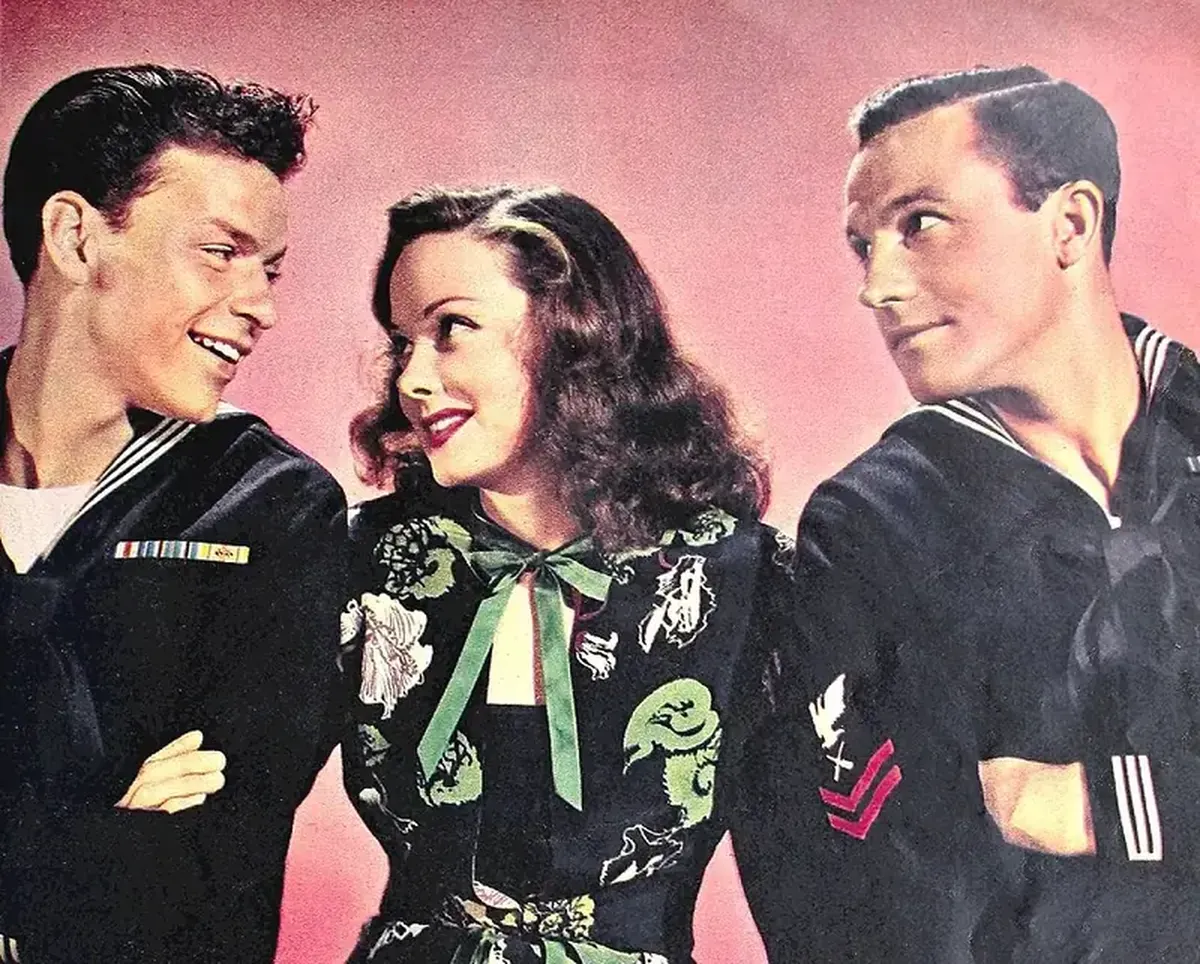
Frank Sinatra, Kathryn Grayson, and Gene Kelly in the musical comedy Anchors Aweigh, 1945
Everything Starts Again
Alongside his work in film, Sinatra became the host of his own television show, where he performed songs and engaged in witty skits with guest artists, showcasing his signature humor. By 1952, the singer’s concerts in Las Vegas casinos were already drawing full houses, and over time, he became a nominal owner of that gambling business. Although rumors suggested that his name was merely a “front” and that the casino was actually owned by the mafia, the main thing was Sinatra’s return to film, stage, and television studios. His subsequent albums made it onto Rolling Stone’s list of “500 Greatest Albums of All Time.” In 1960, Sinatra founded his own label, Reprise Records, where he recorded until 1988. One of the songs Frank Sinatra recorded with his daughter Nancy was Somethin’ Stupid from the 1967 album The World We Knew. In 1969, he released the “programmatic” song and album My Way, and in 1980, the musician recorded his next hit, New York, New York.
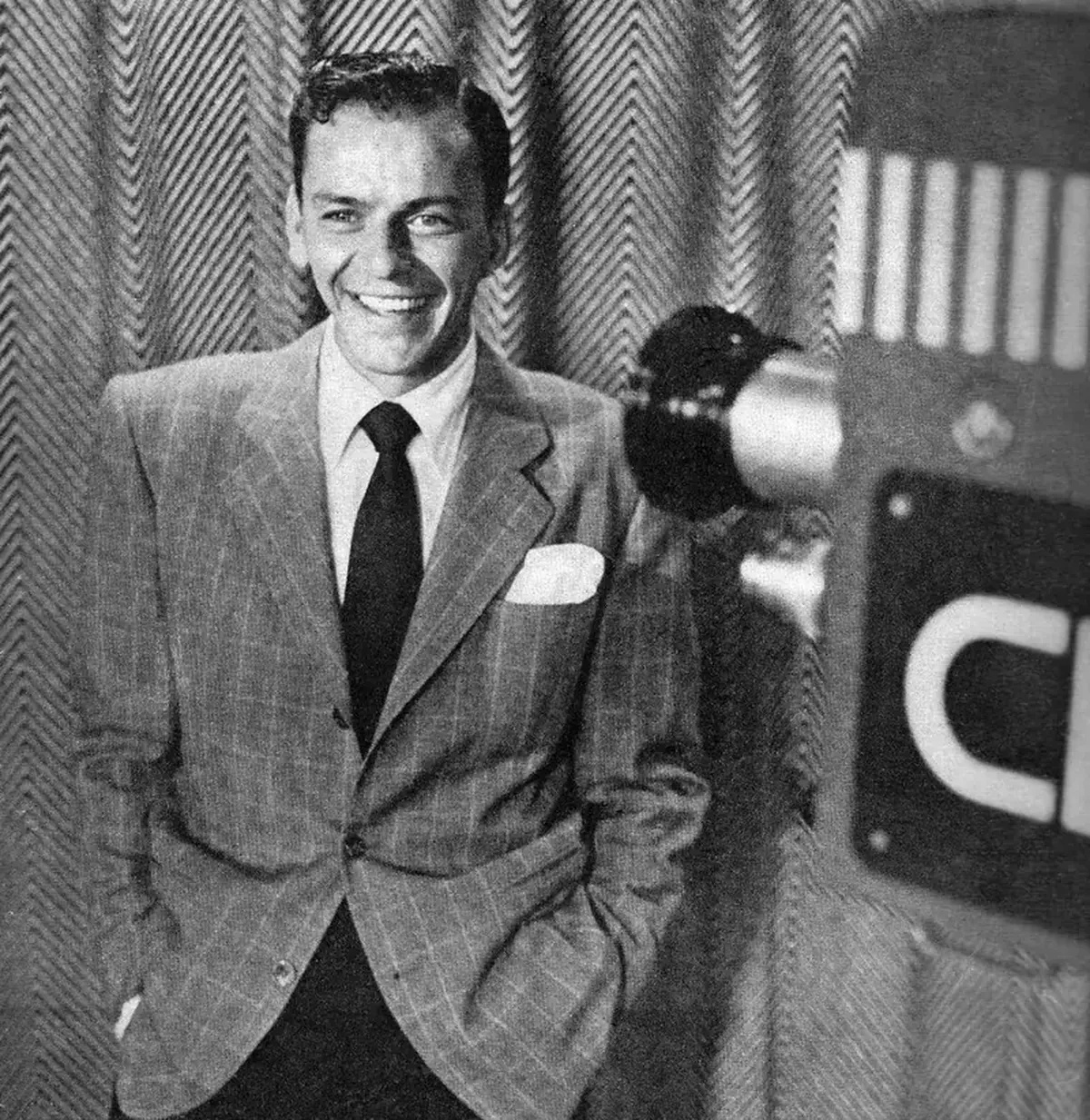
Frank Sinatra filming his own television show
At the Highest Level
Frank Sinatra worked during the 1960 presidential campaign with John Kennedy, whom he confidently declared “the future president of the United States.” They stood together on stage in Las Vegas, but as the activities of the intelligence services increased, monitoring every move of the artist due to his connections with power and the mafia, Sinatra deemed it necessary to gradually distance himself from politicians. However, he could not completely remove himself from the political agenda: politicians used his fame for their own purposes. In the 1950s and 60s, the star was invited for PR events by heads of government and monarchs from various countries. The smile of the legendary actor and singer always graced international meetings at the highest level: under any administration, Frank Sinatra was warmly welcomed at the White House and the Vatican. A member of the Democratic Party of the U.S., he was invited to official events with equal respect by both Democrats and Republicans.
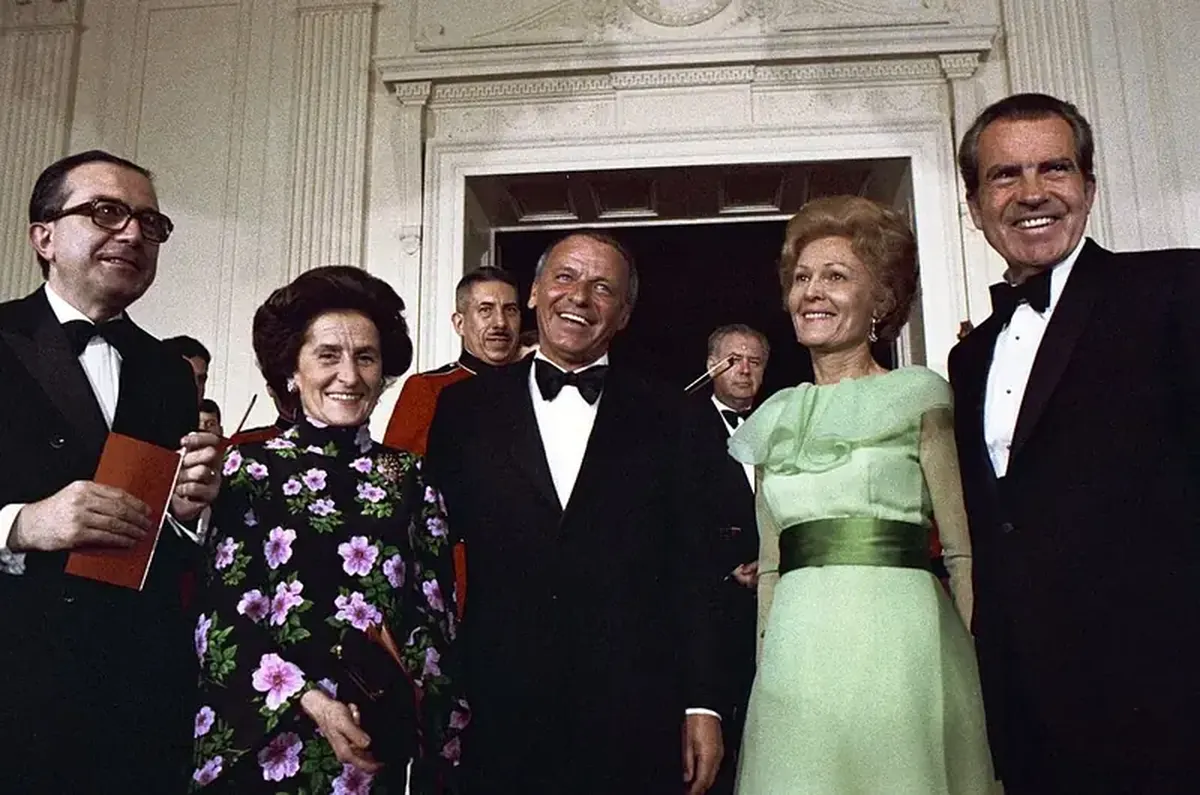
Frank Sinatra and President Nixon at a White House reception for Italian Prime Minister Giulio Andreotti, 1973
In the Grip of Demons
From his first wife, Frank Sinatra had three children – two daughters and a son. They would inherit their father’s $200 million, manage his affairs, and care for the artist in his old age. After divorcing their mother, the passionate lover married three more times – to actresses Ava Gardner, Mia Farrow, and Barbara Marx (with whom he lived until the end of his life). Interestingly, one of his wives (Mia Farrow) later acknowledged him as the “possible father” of her son, years after Sinatra’s death. The close women and children of the musician recalled in their memoirs about his “demons.” Mood swings required medical correction: the singer and actor occasionally suffered from depression. Frank Sinatra himself referred to himself as an “18-carat manic-depressive personality.” In any way to escape loneliness and a dull environment, he often felt the need to “disappear but not get lost.” “There was as much sorrow in my life as there was joy,” said the artist, who lived through emotions. “But I regret nothing because I walked my path the way I wanted.”
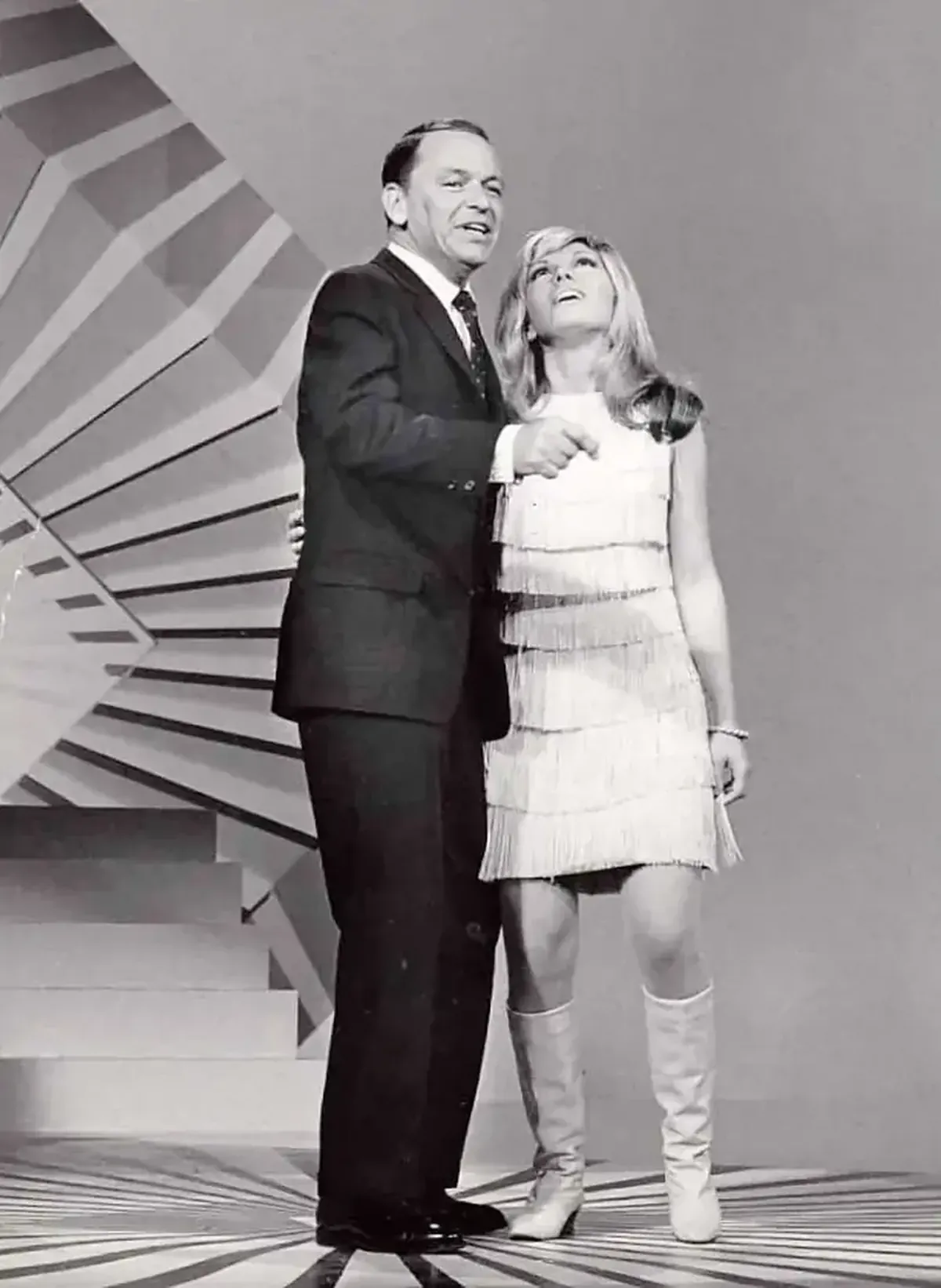
Frank Sinatra and daughter Nancy performing Somethin’ Stupid, 1966
“I’m Losing”
In 1971, Sinatra announced his retirement, but he continued performing until 1994. His last performance took place at the age of 79, and the romantic with the “crooning” voice passed away at 82 after a heart attack on May 14, 1998. In his later years, he spent much time in hospitals, suffering from cancer, high blood pressure, dementia, pneumonia, and respiratory failure (the artist even smoked while performing on stage, consuming two to three packs of cigarettes daily). After a heart attack in 1997, “The Elder Statesman” avoided public appearances. In a medical center in Los Angeles, Frank Sinatra’s last words to his wife were, “I’m losing.” The news of the esteemed American’s death was announced by the dimmed lights of the Manhattan skyscraper Empire State Building and the Las Vegas Strip in Nevada. He was buried next to his parents, and “to take with him to the afterlife,” he was given a pack of cigarettes, a lighter, a bottle of whiskey, and a handful of coins so he could call his friends.
